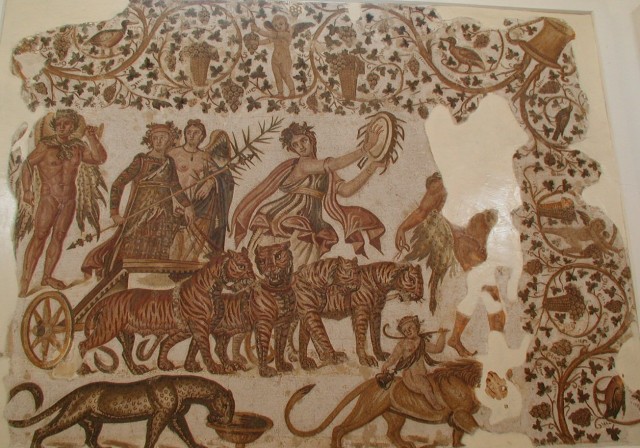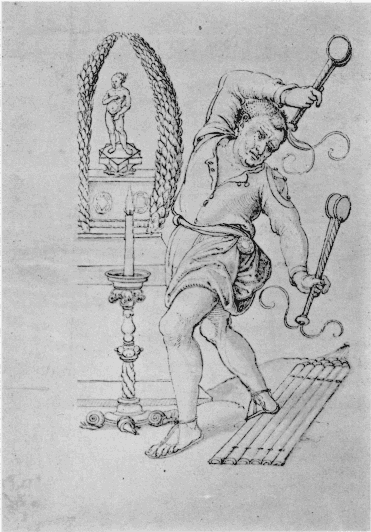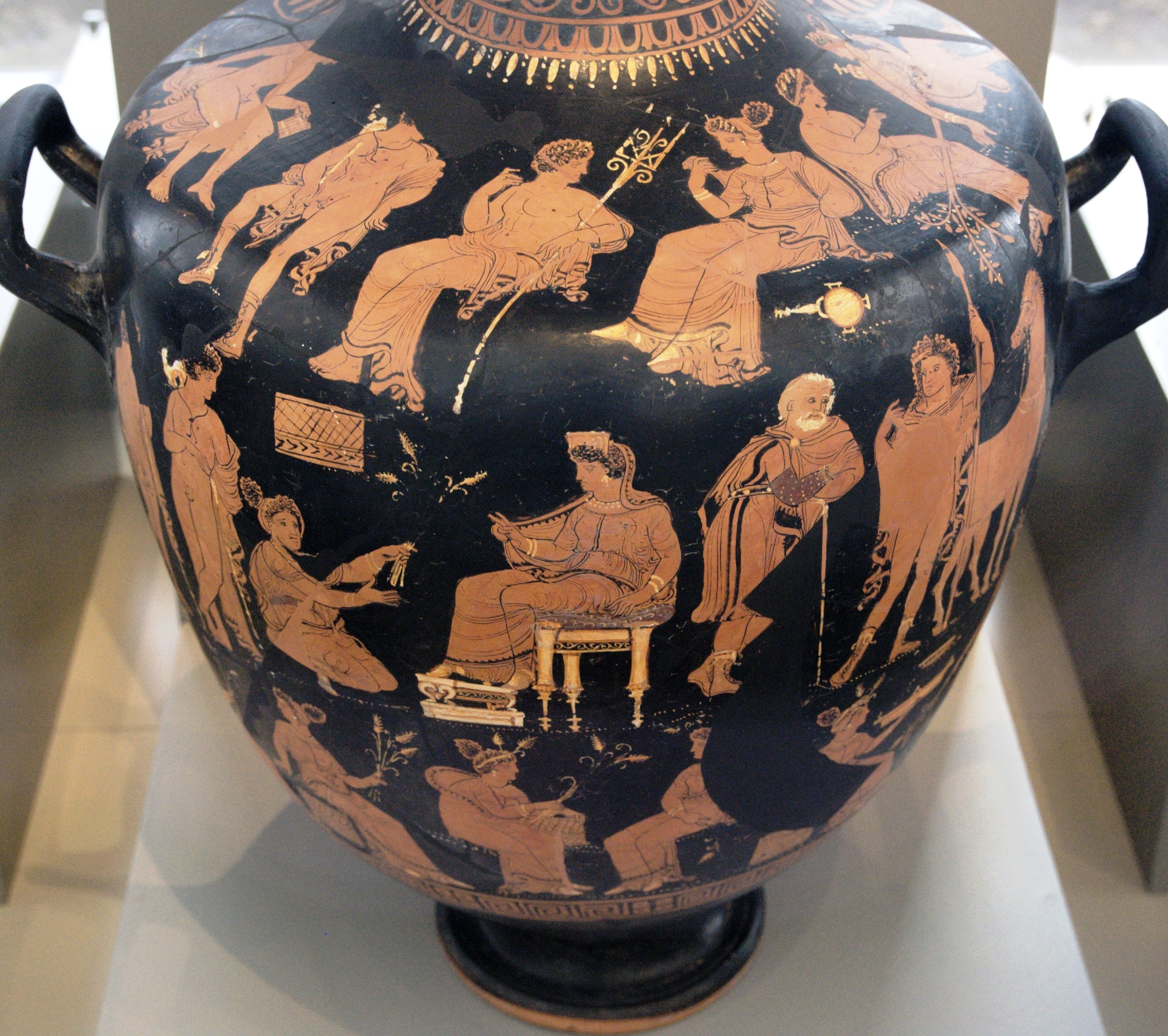|
Cybele
Cybele ( ; Phrygian: ''Matar Kubileya, Kubeleya'' "Kubeleya Mother", perhaps "Mountain Mother"; Lydian: ''Kuvava''; ''Kybélē'', ''Kybēbē'', ''Kybelis'') is an Anatolian mother goddess; she may have a possible forerunner in the earliest neolithic at Çatalhöyük. She is Phrygia's only known goddess, and likely, its national deity. Greek colonists in Asia Minor adopted and adapted her Phrygian cult and spread it to mainland Greece and to the more distant western Greek colonies around the sixth century BC. In Greece, Cybele met with a mixed reception. She became partially assimilated to aspects of the Earth-goddess Gaia, of her possibly Minoan equivalent Rhea, and of the harvest–mother goddess Demeter. Some city-states, notably Athens, evoked her as a protector, but her most celebrated Greek rites and processions show her as an essentially foreign, exotic mystery-goddess who arrives in a lion-drawn chariot to the accompaniment of wild music, wine, and a disorderl ... [...More Info...] [...Related Items...] OR: [Wikipedia] [Google] [Baidu] |
Attis
Attis (; , also , , ) was the consort of Cybele, in Phrygian and Greek mythology. His priests were eunuchs, the '' Galli'', as explained by origin myths pertaining to Attis castrating himself. Attis was also a Phrygian vegetation deity. His self-mutilation, death, and resurrection represents the fruits of the earth, which die in winter only to rise again in the spring. According to Ovid's ''Metamorphoses'', Attis transformed himself into a pine tree. History An Attis cult began around 1250 BCE in Dindymon (today's Murat Dağı of Gediz, Kütahya, Turkey). He was originally a local semi-deity of Phrygia, associated with the great Phrygian trading city of Pessinos, which lay under the lee of Mount Agdistis. The mountain was personified as a '' daemon'', whom foreigners associated with the Great Mother Cybele. In the late 4th century BCE, a cult of Attis became a feature of the Greek world. The story of his origins at Agdistis recorded by the traveller ... [...More Info...] [...Related Items...] OR: [Wikipedia] [Google] [Baidu] |
Galli
A ''gallus'' (pl. ''galli'') was a eunuch priest of the Phrygian goddess Cybele (Magna Mater in Rome) and her consort Attis, whose worship was incorporated into the state religious practices of ancient Rome. Origins Cybele's cult may have originated in Mesopotamia, arriving in Greece around 300 BCE. It originally kept its sacred symbol, a black meteorite, in a temple called the Megalesion in Pessinus in modern Turkey. The earliest surviving references to the ''galli'' come from the ''Greek Anthology'', a 10th-century compilation of earlier material, where several epigrams mention or clearly allude to their castrated state. Stephanus Byzantinus (6th century CE) said the name came from King Gallus, while Ovid (43 BC – 17 CE) said it derived from the Gallus River in Phrygia. The same word (''gallus'' singular, ''galli'' plural) was used by the Romans to refer to Celts and to roosters, and the latter especially was a source of puns. Considering the Mesopotamian connectio ... [...More Info...] [...Related Items...] OR: [Wikipedia] [Google] [Baidu] |
Rhea (mythology)
Rhea or Rheia (; Ancient Greek: Ῥέα or Ῥεία ) is a mother goddess in ancient Greek religion and mythology, the Titan daughter of the earth goddess Gaia and the sky god Uranus, himself a son of Gaia. She is the older sister of Cronus, who was also her consort, and the mother of the five eldest Olympian gods (Hestia, Demeter, Hera, Poseidon, and Zeus) and Hades, king of the underworld. When Cronus learnt that he was destined to be overthrown by one of his children like his father before him, he swallowed all the children Rhea bore as soon as they were born. When Rhea had her sixth and final child, Zeus, she spirited him away and hid him in Crete, giving Cronus a rock to swallow instead, thus saving her youngest son who would go on to challenge his father's rule and rescue the rest of his siblings. Following Zeus's defeat of Cronus and the rise of the Olympian gods into power, Rhea withdraws from her role as the queen of the gods to become a supporting figure on Mount Oly ... [...More Info...] [...Related Items...] OR: [Wikipedia] [Google] [Baidu] |
Tympanum (hand Drum)
In ancient Greece and ancient Rome, Rome, the () or , was a type of frame drum or tambourine. It was circular, shallow, and beaten with the palm of the hand or a stick. Some representations show decorations or zill-like objects around the rim. The instrument was played by worshippers in the rites of Dionysus, Cybele, and Sabazius. The instrument came to Rome from Greece and the Near East, probably in association with the cult of Cybele. The first depiction in Greek art appears in the 8th century BC, on a bronze votive disc found in a cave on Crete that was a cult site for Zeus. Dionysian rites The ''tympanum'' is one of the objects often carried in the ''thiasos'', the retinue of Dionysus. The instrument is typically played by a maenad, while wind instruments such as Pan flute, pipes or the ''aulos'' are played by satyrs. The performance of frenzied music contributed to achieving the Religious ecstasy, ecstatic state that Dionysian worshippers desired. The cult of Cybele The ' ... [...More Info...] [...Related Items...] OR: [Wikipedia] [Google] [Baidu] |
Megalesia
The Megalesia, Megalensia, or Megalenses Ludi was a festival celebrated in ancient Rome from April 4 to April 10, in honour of Cybele, whom the Romans called ''Magna Mater'' ("Great Mother"). The name of the festival derives from Greek ''megalē'' (μϵγάλη), meaning "great". The festival was one of several on the Roman calendar celebrated with '' ludi'', games and performances. Background Cybele's cult image was brought to Rome from Pessinus in 204 BC, along with the goddess's Gallae priestesses. As the "Great Mother of the Gods" and a purported ancestral Trojan goddess of Rome's ruling patrician caste, she was recruited to act on Rome's behalf in the war against Carthage. Her arrival was solemnized with a magnificent procession, sacred feasts ('' lectisternia''), games, and offerings to her at the temple of Victory on the Palatine Hill, where her image was temporarily housed. In 203 Cybele was promised a temple of her own. Games in her honour were celebrated in 193. R ... [...More Info...] [...Related Items...] OR: [Wikipedia] [Google] [Baidu] |
Mystery Religion
Mystery religions, mystery cults, sacred mysteries or simply mysteries (), were religious schools of the Greco-Roman world for which participation was reserved to initiates ''(mystai)''. The main characteristic of these religious schools was the secrecy associated with the particulars of the initiation and the ritual practice, which may not be revealed to outsiders. The most famous mysteries of Greco-Roman antiquity were the Eleusinian Mysteries, which predated the Greek Dark Ages. The mystery schools flourished in Late Antiquity; Emperor Julian, of the mid-4th century, is believed by some scholars to have been associated with various mystery cults—most notably the mithraists. Due to the secret nature of the schools, and because the mystery religions of Late Antiquity were persecuted by the Christian Roman Empire from the 4th century, the details of these religious practices are derived from descriptions, imagery and cross-cultural studies. Justin Martyr in the 2nd century e ... [...More Info...] [...Related Items...] OR: [Wikipedia] [Google] [Baidu] |
Hilaria
The Hilaria (; Latin "the cheerful ones", a term derived from the borrowed adjective "cheerful, merry") were ancient Roman religious festivals celebrated on the March equinox to honor Cybele. Origins The term seems originally to have been a name which was given to any day or season of rejoicing. The ''hilaria'' were, therefore, according to Maximus the Confessor either private or public. Among the former, he thinks it the day on which a person married, and on which a son was born; among the latter, those days of public rejoicings appointed by a new emperor. Such days were devoted to general rejoicings and public sacrifices, and no one was allowed to show any symptoms of grief or sorrow. The Romans also celebrated ''hilaria'' as a '' feria stativa'', on March 25, the seventh day before the Calends of April, in honor of Cybele, the mother of the gods; and it is probably to distinguish these ''hilaria'' from those mentioned above, that the '' Augustan History'' calls them Hi ... [...More Info...] [...Related Items...] OR: [Wikipedia] [Google] [Baidu] |
Phrygia
In classical antiquity, Phrygia ( ; , ''Phrygía'') was a kingdom in the west-central part of Anatolia, in what is now Asian Turkey, centered on the Sangarios River. Stories of the heroic age of Greek mythology tell of several legendary Phrygian kings: * Gordias, whose Gordian Knot would later be cut by Alexander the Great * Midas, who turned whatever he touched to gold * Mygdon, who warred with the Amazons According to Homer's ''Iliad'', the Phrygians participated in the Trojan War as close allies of the Trojans, fighting against the Achaeans. Phrygian power reached its peak in the late 8th century BC under another historical king, Midas, who dominated most of western and central Anatolia and rivaled Assyria and Urartu for power in eastern Anatolia. This later Midas was, however, also the last independent king of Phrygia before Cimmerians sacked the Phrygian capital, Gordium, around 695 BC. Phrygia then became subject to Lydia, and then successivel ... [...More Info...] [...Related Items...] OR: [Wikipedia] [Google] [Baidu] |
Demeter
In ancient Greek religion and Greek mythology, mythology, Demeter (; Attic Greek, Attic: ''Dēmḗtēr'' ; Doric Greek, Doric: ''Dāmā́tēr'') is the Twelve Olympians, Olympian goddess of the harvest and agriculture, presiding over crops, grains, food, and the fertility (soil), fertility of the earth. Although Demeter is mostly known as a grain goddess, she also appeared as a goddess of health, birth, and marriage, and had connections to the Greek underworld, Underworld. She is also called Deo ( ''Dēṓ''). In Greek tradition, Demeter is the second child of the Titans Rhea (mythology), Rhea and Cronus, and sister to Hestia, Hera, Hades, Poseidon, and Zeus. Like her other siblings except Zeus, she was swallowed by her father as an infant and rescued by Zeus. Through Zeus, she became the mother of Persephone, a fertility goddess and Dying-and-rising deity, resurrection deity. One of the most notable ''Homeric Hymns'', the ''Homeric Hymn to Demeter'', tells the story of ... [...More Info...] [...Related Items...] OR: [Wikipedia] [Google] [Baidu] |
Sibylline Books
The ''Sibylline Books'' () were a collection of oracular utterances, set out in Greek hexameter verses, that, according to tradition, were purchased from a sibyl by the last king of Rome, Lucius Tarquinius Superbus, and consulted at momentous crises through the history of the Roman Republic and the Empire. Only fragments have survived, the rest being lost or deliberately destroyed. The ''Sibylline Books'' are not the same as the ''Sibylline Oracles'', which are fourteen books and eight fragments of prophecies thought to be of Judaeo-Christian origin. History left, Erythraean_Sibyl.html" ;"title="Michelangelo's rendering of the Erythraean Sibyl">Michelangelo's rendering of the Erythraean Sibyl According to the Roman tradition, the oldest collection of Sibylline books appears to have been made about the time of Solon and Cyrus the Great, Cyrus at Gergis, Troad, Gergis on Mount Ida (Turkey), Mount Ida in the Troad; it was attributed to the Hellespontine Sibyl and was preserve ... [...More Info...] [...Related Items...] OR: [Wikipedia] [Google] [Baidu] |
Roman Mythology
Roman mythology is the body of myths of ancient Rome as represented in the literature and visual arts of the Romans, and is a form of Roman folklore. "Roman mythology" may also refer to the modern study of these representations, and to the subject matter as represented in the literature and art of other cultures in any period. Roman mythology draws from the mythology of the Italic peoples and shares mythemes with Proto-Indo-European mythology. The Romans usually treated their traditional narratives as historical, even when these have miraculous or supernatural elements. The stories are often concerned with politics and morality, and how an individual's personal integrity relates to his or her responsibility to the community or Roman state. Heroism is an important theme. When the stories illuminate Roman religious practices, they are more concerned with ritual, augury, and institutions than with theology or cosmogony. Roman mythology also draws on Greek mythology, primaril ... [...More Info...] [...Related Items...] OR: [Wikipedia] [Google] [Baidu] |
Metroon
A metroon (, or ) was an ancient Greek temple dedicated to a mother goddess. They were often devoted to Cybele, Demeter, or Rhea. Athens Coordinates: The Athenian Metroon was located on the west side of the city's Agora, in the Old Bouleuterion, which formerly housed the city council. At the end of the 5th century BC, the New Bouleuterion was built and the council's former home converted into a temple to Cybele. According to legend, the Athenians had killed one of her wandering priests when he attempted to introduce her cult; the plague which then visited the city was dealt with by honoring her. (The account may, however, have been a later invention, as the earliest source is from the 4th century AD.) The Metroon served other public functions, such as housing the official archives of the city. For instance, the philosopher Epicurus filed a donatio mortis causa there. Olympia The Olympian Metroon was erected in the late 4th or early 3rd century BC, immed ... [...More Info...] [...Related Items...] OR: [Wikipedia] [Google] [Baidu] |








